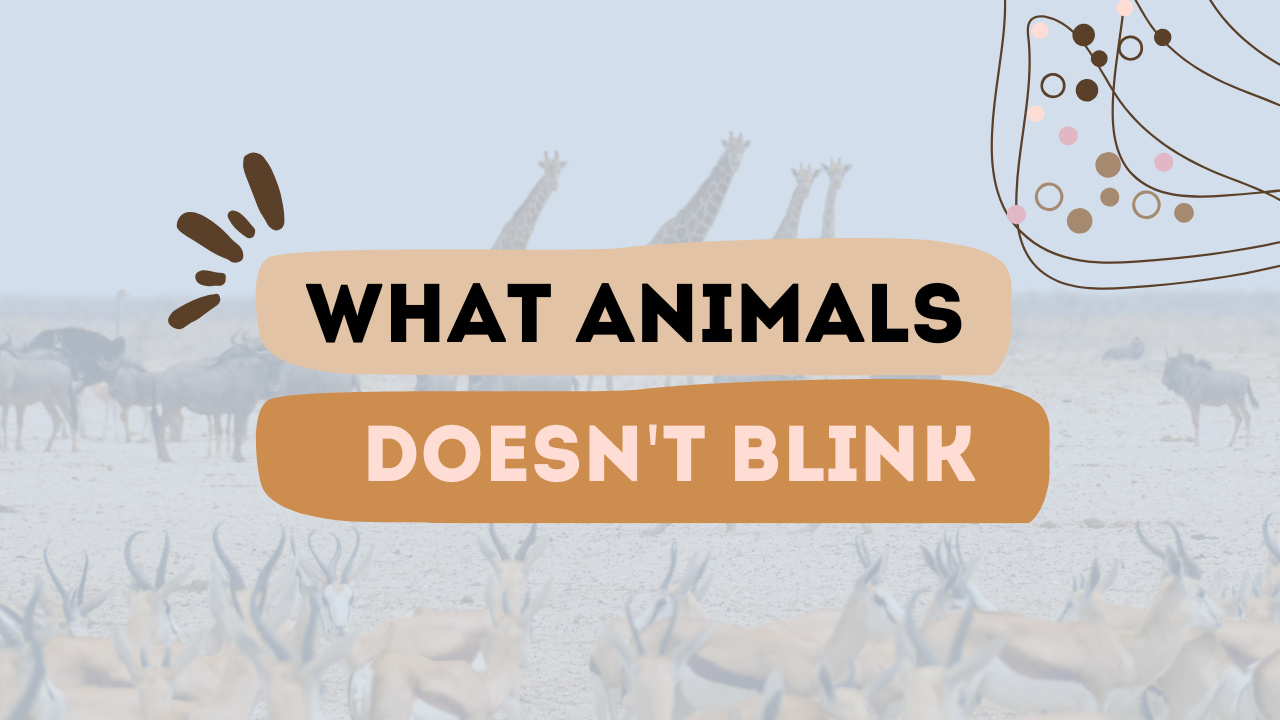Have you ever seen a snake staring at you and questioned whether it ever blinks? Snakes don’t blink at all, it turns out. However, a number of other creatures have evolved to survive without this typical human instinct, so they are not alone. The interesting world of animals that don’t blink will be examined in this article, along with how they have evolved to survive without this seemingly necessary activity.
Snakes: Masters of the Unblinking Gaze
The first thing that comes to mind is snakes. Since these slithy animals lack eyelids, blinking is not an option. Rather, each eye is covered by a transparent scale known as a brille (or spectacle). Like an eyelid, this scale shields the eye from dirt and keeps it from drying out. Interestingly, snakes’ eyeballs receive a new “coat” on a regular basis since they lose this scale along with their skin.
Snakes that lack eyelids also sleep with their eyes open. Their brains enable them to sleep while still being aware of possible dangers, which is a useful survival skill whether you’re either prey or a predator in the wild.
Fish: The Aquatic Blinkers
Fish also don’t blink. They don’t need to blink to keep their eyes wet or debris-free because their eyes are continuously soaked in moisture while submerged in the water. They shield their eyes instead by covering them with a translucent coating. Their aquatic existence is ideal for this adaption.
Geckos and Other Reptiles
Eyelids are also absent in geckos, certain lizards, and skinks. Rather, like snakes, they have an opaque scale covering each eye. This scale protects and moisturizes their eyes. They lose this kind of scale along with their outer layer when it’s time to shed.
Mudskippers: The Amphibious Blinkers
Interesting fish that devote a lot of time out of the water are mudskippers. Despite lacking eyelids, they have developed a special method for keeping their eyes wet. A cup of water under the eye keeps it hydrated as they pull their eyes back into their sockets. They can live in both aquatic and terrestrial settings thanks to their adaption.
Praying Mantises: The Insect Blinkers
Eyelids are also absent from praying mantises. To keep their eyes clear and debris-free, they instead wipe them with their forelegs. Given how much they depend on their vision to hunt and evade predators, this activity is essential for preserving clear vision.
Birds: The Nictitating Membrane
The nictitating membrane is a special adaption that birds use in place of blinking. Moving horizontally over the eye, this invisible third eyelid protects and moisturizes without blocking vision. For birds that dive underwater or fly at high speeds, where maintaining excellent vision is crucial, it’s extremely helpful.
Why Don’t Snakes Blink?
Why, then, did snakes initially lose their eyelids? Their evolutionary history has the answer. Snakes descended from eyelid-bearing lizard-like forebears. Their absence of eyelids allowed them to move in confined places, and they eventually adapted to a digging lifestyle. Without blinking, the clear brille offered the required protection.
Final Thoughts
The remarkable flexibility of life on Earth is demonstrated by the fact that certain creatures do not blink. These animals have developed special ways to survive without blinking, such as the brille of a snake, the watery habitat of a fish, or the nictitating membrane of a bird. You’ll be more appreciative of these animals’ amazing adaptations the next time you see one.

